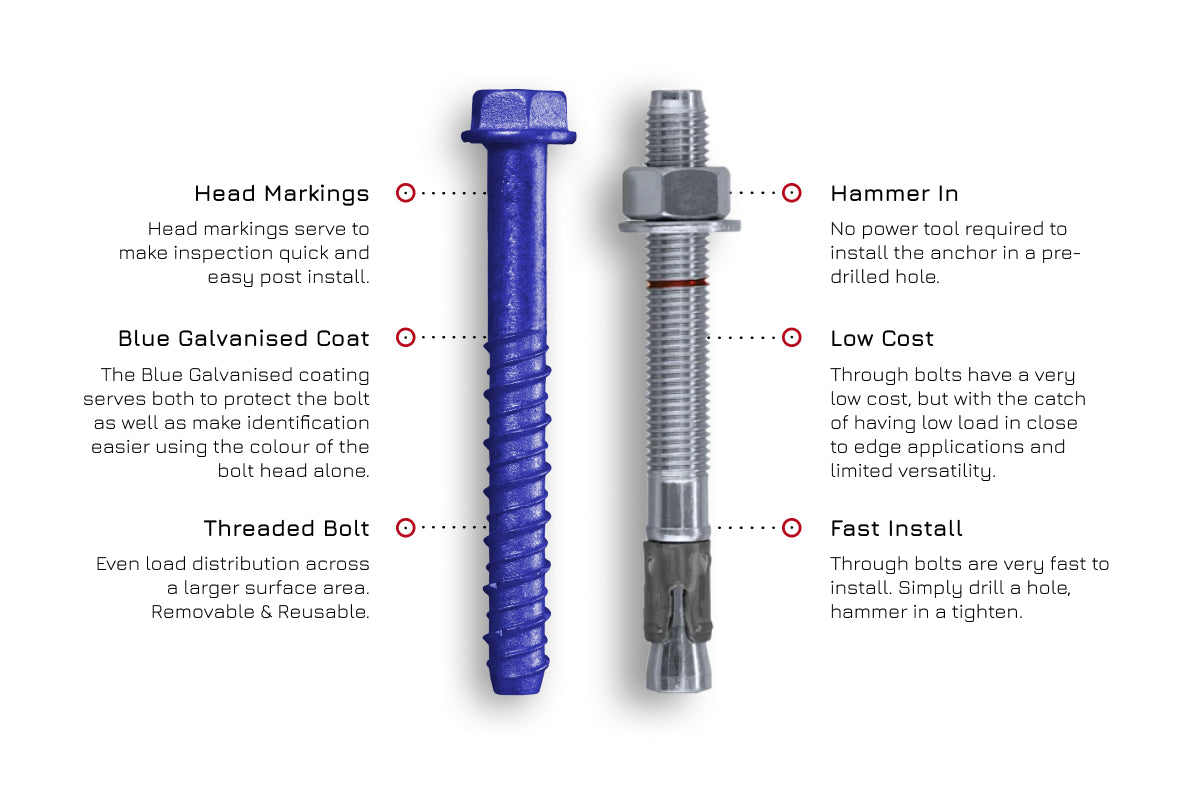What is the Right Fastener for Bottom Plate Anchoring?
Introduction:
Bottom plate anchoring is a critical aspect of construction, ensuring the stability and safety of structures. In New Zealand, two popular choices for this purpose are the 10x140mm galvanised Screwbolt, often referred to as the "Blue Head," and the 12x135mm galvanised Throughbolt. This article aims to explore the strengths and weaknesses of both options, with a focus on why the 10x140mm Screwbolt may be the superior choice for bottom plate anchoring.
Strength and Load Distribution:
One of the key factors that set Screwbolts apart is their threaded design. The 10x140mm Screwbolt boasts a remarkable kN rating of 15 making them perfect to use in both solid slab and header block. The secret lies in the design; Screwbolts, being screw anchors, exert minimal stress on the substrate during installation. This characteristic makes them ideal for applications close to the edge, as they are less likely to cause substrate cracking compared to Throughbolts which are only suitable for solid slab with a 7kN load.
Additionally, the threaded design of Screwbolts ensures a more even load distribution across a larger surface area. This results in enhanced overall load strength, making Screwbolts a reliable choice for bottom plate anchoring where structural integrity is paramount.
Ease of Installation and Identification:
The installation process and post-installation identification also play a crucial role in selecting the right concrete anchor. Screwbolts, such as the 10x140mm Blue Head, offer advantages in both these aspects.
The one-piece design of Screwbolts allows for easy post-installation identification. Critical dimensions, including diameter and length, can be stamped directly onto the bolt's head. This feature facilitates quick and accurate identification, streamlining the construction process. On the other hand, Throughbolts require hammering during installation, often defacing the top of the anchor. This makes head marking impractical, potentially leading to confusion during identification.
Versatility and Application:
Screwbolts prove to be more versatile in various applications due to their stress-free anchoring. The absence of expansion forces during installation makes Screwbolts suitable for use close to the edge, minimising the risk of substrate damage. Being a threaded fastener also allows Screwbolts to be removed and reused.
Throughbolts, relying on expansion anchoring, may exert greater force on the substrate during installation, increasing the likelihood of cracking—especially in situations where proximity to the edge is a concern. This makes Screwbolts, with their smoother and less intrusive installation process, a preferred choice for bottom plate anchoring in a range of scenarios.
Conclusion:
In the debate between the 10x140mm galvanised Screwbolt and the 12x135mm galvanised Throughbolt for bottom plate anchoring in New Zealand, the evidence leans towards the superiority of Screwbolts. The combination of higher load capacity, stress-free anchoring, and ease of identification makes the 10x140mm Screwbolt, known as the "Blue Head," a reliable and efficient choice for ensuring the stability and longevity of structures.
Ultimately, the selection of the appropriate concrete anchor depends on the specific requirements of the project and adherence to local building codes. However, considering the advantages discussed, Screwbolts emerge as a compelling option for bottom plate anchoring, particularly in situations where strength, ease of identification, and stress-free installation are crucial considerations.

